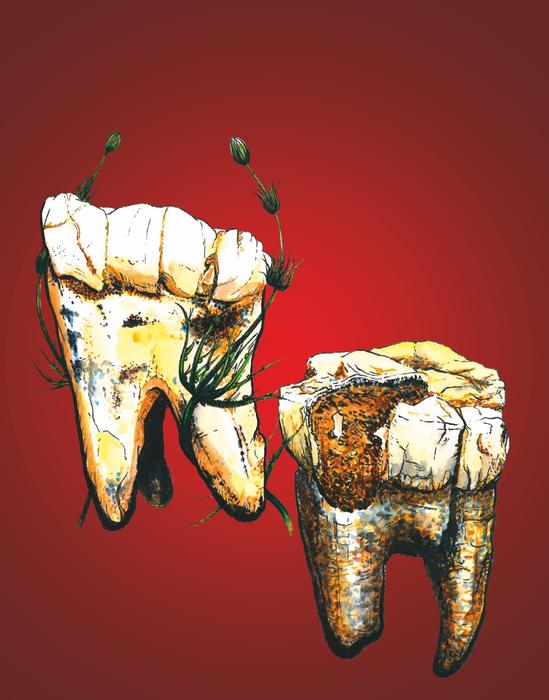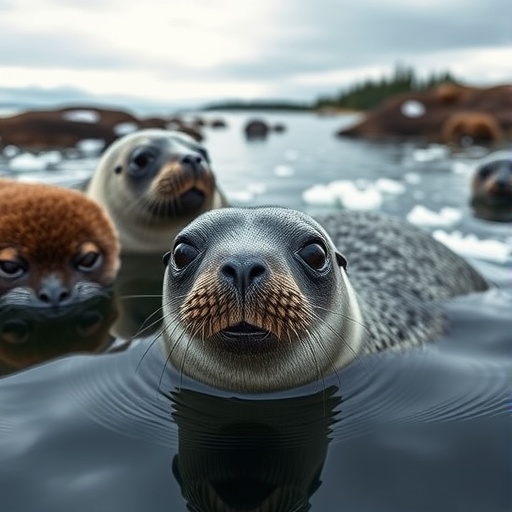
Human evolution is a captivating tale, often punctuated by significant dietary shifts that prompted substantial physiological changes. Recent findings have shed new light on the eating habits of one of our earliest ancestors, Australopithecus, which existed approximately 3.5 million years ago in southern Africa. Contrary to assumptions that early hominins incorporated a significant proportion of meat into their diets, new research indicates a starkly different reality. The compelling evidence comes from a meticulous analysis of nitrogen isotopes found in the fossilized tooth enamel of several Australopithecus individuals, revealing a predominantly plant-based diet.
The quest to understand early dietary practices is fraught with complexities, given the challenges of analyzing ancient remains. However, researchers from the Max Planck Institute for Chemistry in Germany and the University of the Witwatersrand in South Africa took a significant step forward in unraveling this mystery. Their investigation delved into the nitrogen isotopic composition of tooth enamel sourced from Australopithecus fossils discovered in the Sterkfontein caves. These caves, part of the UNESCO World Heritage site known as the “Cradle of Humankind,” are renowned for yielding critical fossil evidence that has shaped our understanding of human evolution.
Tooth enamel, being the hardest tissue in the mammalian body, possesses remarkable durability. This characteristic allows it to retain isotopic signatures of dietary habits over millions of years. Lead author Tina Lüdecke emphasized the importance of this feature, noting that her team’s work marks a pioneering effort in utilizing nitrogen isotope analysis on fossilized dental remains that span millennia. Traditional methods have been limited to analyzing samples dating back just tens of thousands of years; Lüdecke’s team employed a novel technique that measured the nitrogen isotope ratios in much older specimens, thereby providing unprecedented insights into ancient diets.
Nitrogen isotopes play a crucial role in reconstructing the diets of extinct species. The distinction between the lighter nitrogen isotope (^14N) and the heavier one (^15N) hinges upon biological processes within animals. As animals metabolize food, they preferentially retain the lighter isotope. Consequently, herbivores exhibit a higher nitrogen ratio than the plants they consume, while carnivores, in turn, have an even higher ratio compared to their prey. Thus, analyzing nitrogen isotope ratios can reveal an organism’s place in the food web and its dietary habits.
The findings from this research were illuminating. The team discovered that the nitrogen isotope ratios in the tooth enamel of Australopithecus individuals were consistently low, akin to those of herbivorous animals, yet significantly lower than that of contemporary carnivores. This suggests that these early hominins likely subsisted on a diet composed largely, if not entirely, of plant-based foods. Such revelations challenge previous assumptions regarding Australopithecus’s dietary habits and highlight a potential divergence from later hominins, such as Neanderthals, known for their hunting practices.
Though the findings strongly indicate a primarily vegetarian diet, the researchers were cautious not to dismiss the possibility of sporadic consumption of animal protein. While the evidence suggests that Australopithecus did not engage in regular hunting of large mammals, the potential for occasional consumption of smaller protein sources, such as insects or scavenged animal remains, remains open for consideration. This nuanced understanding of their dietary patterns illustrates the complexity of early hominin feeding strategies.
The study’s implications extend far beyond the menu of Australopithecus. The research team aims to broaden their exploration to encompass additional hominin species and varying time periods. By analyzing fossils from key sites in eastern and southern Africa, as well as exploring regions in southeast Asia, they aspire to chart the evolution of meat consumption and its potential impacts on hominin evolution. More specifically, they seek to answer pivotal questions about when our ancestors began to incorporate meat into their diets and whether this dietary shift aligned with increases in brain volume or development of tool-making capabilities.
As the methodology employed in this research heralds a new era for dietary analysis of fossilized remains, the possibilities for its application are truly exciting. This study represents a significant breakthrough in understanding past ecosystems and the evolutionary pressures faced by our ancestors. The findings not only illustrate the diets of early hominins but also open avenues for re-evaluating the timelines of dietary transitions in human evolution.
Scientific exploration, particularly in the field of anthropology, necessitates a multidisciplinary approach. Collaborations between geochemists, paleontologists, and evolutionary biologists are essential for piecing together the elaborate puzzle of human ancestry. The work conducted at Sterkfontein stands as a testament to the effectiveness of this collaborative approach, utilizing advanced isotopic techniques to glean insights from some of our oldest relatives.
In conclusion, the research conducted by Lüdecke and her team encapsulates a profound advancement in our understanding of human evolution. By elucidating the dietary habits of Australopithecus, this study presents a fresh perspective on the evolutionary narrative, highlighting the role of plant-based nutrition in shaping our early ancestors. As ongoing investigations promise to deepen this understanding, the story of our dietary evolution continues to unfold.
Despite the archaeological excitement surrounding the fossilized remains of early hominins, each new discovery underscores the importance of reexamining long-held beliefs about our prehistoric ancestors. The narrative of Australopithecus invites us to contemplate the intricate relationship between diet, environment, and evolution, illuminating paths that may one day explain how it is that we, as a species, came to dominate the planet.
As scientific inquiries in this domain press forward, it is imperative to stay attuned to the developments that not only enrich our academic understanding but also resonate with the broader public. The story of Australopithecus, once a mere whisper in the annals of time, now resonates as a significant chapter in the grand tale of human existence.
Subject of Research: Dietary habits of Australopithecus
Article Title: Australopithecus at Sterkfontein did not consume substantial mammalian meat
News Publication Date: 16-Jan-2025
Web References: 10.1126/science.adq7315
References:
Image Credits: Dom Jack, MPIC
Keywords: Australopithecus, human evolution, diet, nitrogen isotopes, Sterkfontein, plant-based diet, early hominins, anthropology, fossilized remains, meat consumption.






